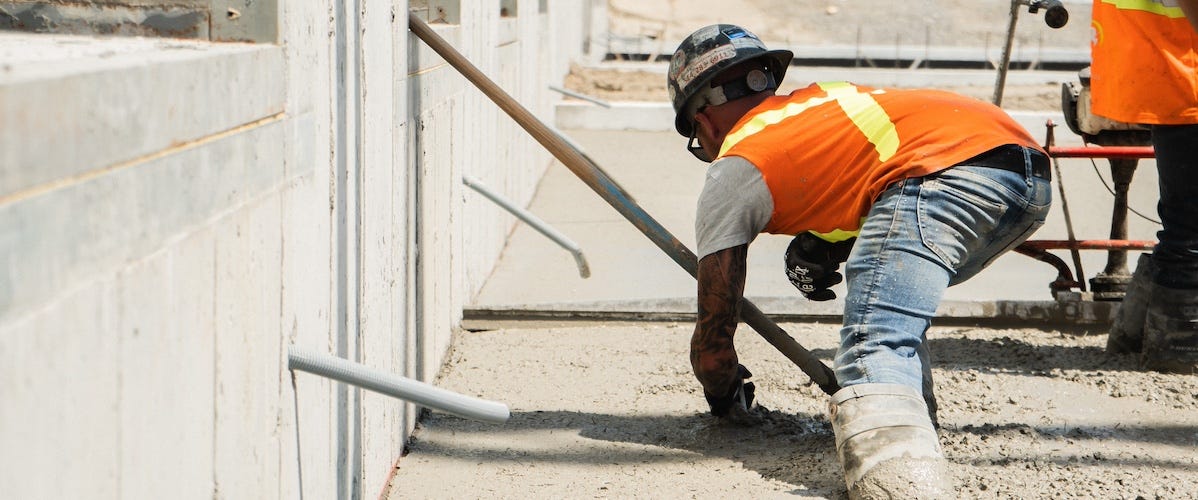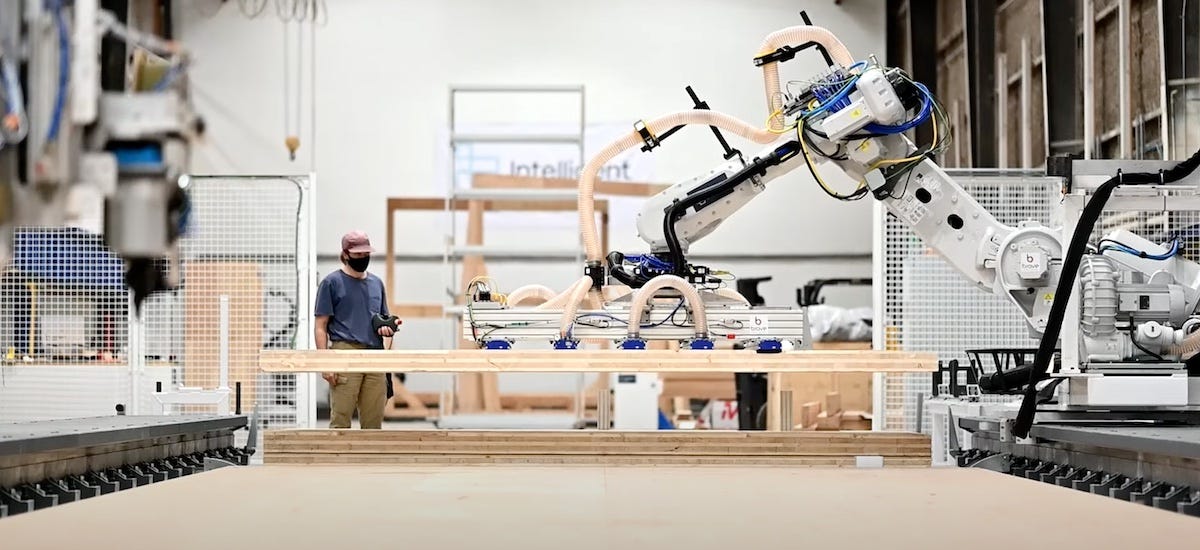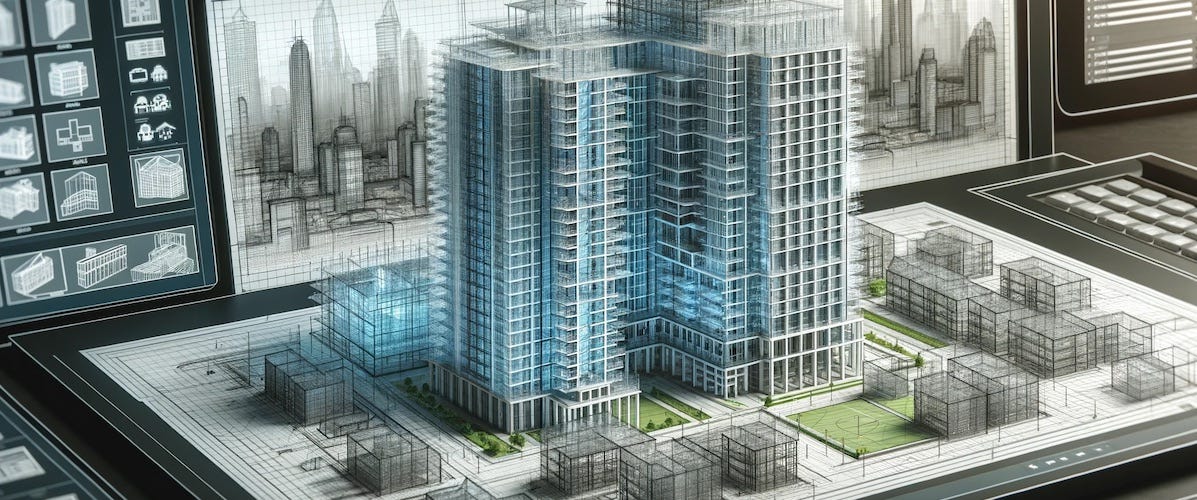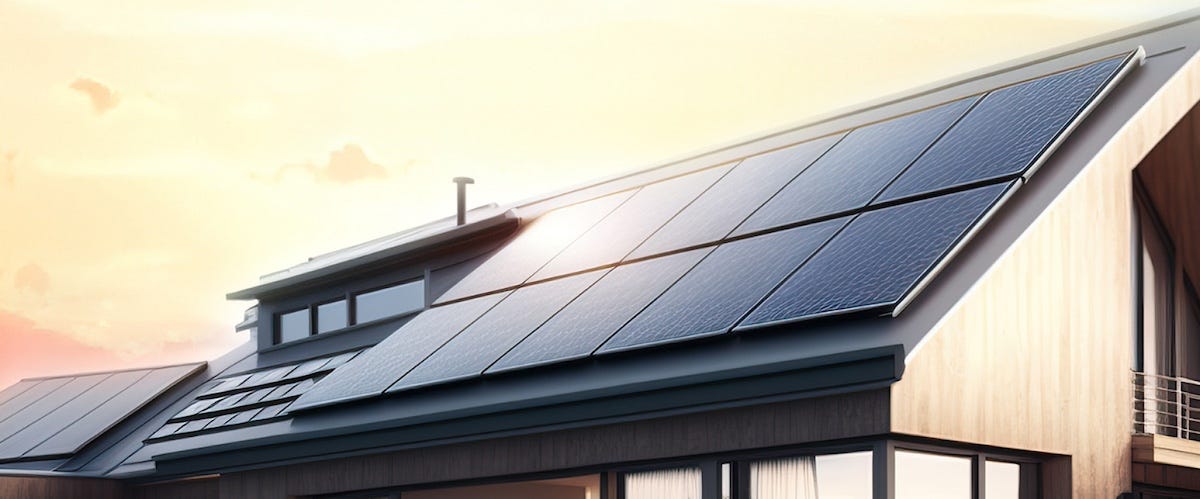Building the future with climate-smart housing
How we can build the millions of homes needed to make housing affordable without sacrificing our climate ambitions, and the Canadian companies deploying solutions.
Hey there,
Welcome to a special weekend deep dive on climate-smart housing. One of the hardest questions we’ll face in addressing the housing crisis is how we build a ton of new homes without blowing our carbon budget. But are there ways to align these goals?
In today’s post:
Climate crisis, meet housing crisis
How we can build more sustainably
How these solutions can help us build more
Headwinds and tailwinds for low-carbon housing
Let’s get into it!
Around the world, countries are facing housing shortages. Canada needs to build 5.8 million units of new housing by 2030 to bring housing back to affordable levels. The U.S. is behind by 6.5 million homes and the UK by more than 4 million. At the same time, the homebuilding industry is facing serious headwinds - supply chain delays, stagnating productivity, and labour shortages.
But what about the climate crisis? Building homes the way we always have means a lot of new carbon emitted - about 400 kg of CO2 equivalent per square meter. Buildings already account for about 40% of emissions globally and about 18% of emissions in Canada.
If we keep building the way we always have, we’re going to be in trouble.
The question we’re diving into today: can we tackle housing and climate together, rather than pitting them against each other?
The hard numbers
Emissions from buildings fall into two types:
Operational: emissions from operating / inhabiting, e.g. heating, water use.
Embodied: emissions from production, transport and construction of a building and it’s materials, e.g. cement, moving materials to sites, steel production.
The impact of each type on overall emissions depends on the local energy mix. If you have a low-carbon grid, >90% of lifetime emissions will come from embodied carbon. With a more carbon-intensive grid, embodied carbon could make up just 21% of lifecycle emissions.

Building homes that align with our net-zero targets means finding ways to replace or adapt key materials like steel, wood, and concrete as well as the systems we rely on while living in them.
Materials
Concrete. Companies like CarbonCure, CarbiCrete and Carbon Upcycling are replacing carbon-intensive cement with industrial by-products or sequestering carbon in the concrete to produce concrete with low- or net-negative carbon footprints. Learn more about concrete in our deep dive:
Modular panels. ZS2 Technologies develops modular panels as an alternative to stick frame building. They can be quickly assembled, cut emissions by 1/3 and improve fire resistance.
Recycled materials. Northstar Clean Technologies recycles roof shingles, diverting waste from landfills and reusing the materials in new shingles.
Mass timber can sequester the carbon locked up by trees in buildings. The lifecycle emissions are highly variable, however, depending on how the trees are harvested, what happens at end of life, and the impact of other materials used in mass timber buildings.
Prefabrication
Prefabrication means the components of a home are produced in a central facility, then shipped to the site where they’re assembled. The process has been around for hundreds of years - what’s new is how we can automate and optimize the process by combining robotics, artificial intelligence and sustainable materials. Several Canadian companies are blending prefab methods with sustainable materials:
Promise Robotics is developing industrial production systems for home builders combining robotics and AI. Promise states they can avoid ~560 tonnes of GHGs per home, and has raised $34M to date.
Nexii Building Solutions uses prefab panels that replace concrete, steel and wood to build houses and commercial buildings quickly and with minimal waste. The panels can be reused in other projects before being recycled, lowering their lifecycle emissions further. Nexii was valued at $2B in 2022 after raising a total of $180M.
Intelligent City offers a building platform that combines mass timber, robotics and automation to produce prefabricated mid- and high-rise buildings. It’s an end-to-end platform, allowing them to offer highly customizable design options that can be delivered quickly and consistently.
🦾 Prefab can play a critical role in speeding up the learning curve for new technologies as production teams get many reps in with new materials and can apply learnings quickly.
Better design
New software platforms are helping building developers design more efficient homes before shovels even hit the ground.
Adaptis enables building owners and operators to make better decisions about decarbonizing and adaptation planning. The platform automates building data inputs to help set benchmarks, and generates data-informed designs for a range of performance metrics.
Climative is helping automate the home retrofit process by producing personalized low-carbon plans to execute on retrofits quickly.
Operations
This section could be a whole post on its own, as it spans just about every facet of living in a home, from smart appliances to renewable energy to waste diversion. A couple of standouts:
🌋 Subterra Renewables delivers district energy systems powered by geothermal energy. Subterra allows developers to install the system with no upfront cost, paying for the low-carbon energy system over time.
🔋 dcbel offers a smart energy hub for homes, connecting solar panels, EV charging and battery storage to cut home emissions and contribute to grid reliability.
🌡️ Mysa and ecobee give homeowners the ability to optimize their energy use to be more efficient with smart thermostats and connected devices. Parity offers intelligent HVAC optimization for multi-unit residential buildings, cutting costs by up to 30%.
📊 Edgecom Energy’s integrated energy management platform gives building managers insights into energy use and helps drive decisions to reduce costs and emissions.
☀️ Mitrex has developed integrated solar that blends in to buildings as roof tiles, fences and siding to provide low-carbon energy in any situation.
🪟 3E Nano is developing nano-thin coatings for windows that regulate the amount of heat a building absorbs while maintaining light quality.
🚗 Kite Mobility offers mobility-as-a-service to multi-unit buildings with EV and e-bike shares. The amenity allows builders to cut back on parking spaces that require tons of concrete while also reducing emissions from personal vehicles.
Building faster
The gut reaction to some of these technologies is often “that’s great, but how will you convince people to pay the green premium for these things, particularly in this market?”. Here’s why climate-smart building can also lead to better outcomes for the housing market:
👷 Labour and speed. Prefab components are delivered ready to be assembled, cutting the time and labour required on-site. They can also be constructed while site preparation is underway, the parallel processing time speeding up projects and mitigating delays from supply chains.
🧠 Decision making. Modelling and design software can help expedite project decisions up front, helping builders optimize designs and understand material costs.
💰 Operational costs. More efficient buildings have lower long-term operational costs that are attractive to building operators and investors. Major real estate companies like Minto and Canadian Apartment Properties look at sustainability measures as a key lever to improve the operational performance and cash flow of their portfolios.
Why now, why here
There are a handful of reasons why I’m optimistic about this space:
Market Size. Residential real estate is a huge market - $60B dollar in Canada and ~$4T globally. Canada has large real estate companies like Choice Properties and Canadian Apartment Properties with >$5B market caps to make investments.
A gap in proptech. Major investors like CEMEX Ventures see the writing on the wall:
“There will be heightened demand for new processes, products, and services that reduce the negative environmental impacts in the construction industry. We should expect to see not only an increased number of Cleantech deals in this operational area, but also an increase in the amount of money invested in these projects” - CEMEX Ventures
Just 15% of proptech funding went to green construction in 2022, while other sectors are becoming saturated. Capital may shift to sustainable tech, particularly those that also address productivity & supply chains.
Legislation. Governments are setting stricter environmental regulations around the world. Canada’s tiered building codes lay out a clear path to net-zero that builders will need to meet over time. Climate disclosure rules like those proposed by the SEC and EU’s Corporate Sustainability Reporting Directive are putting pressure on real estate developers and their investors to set and hit net-zero targets.
And it’s not all sticks. The Canada Infrastructure Bank has billions in the bank to support retrofitting existing buildings and the federally-backed Green Municipal Fund provides grants and loans to pilot projects and sustainable buildings.
Green premiums. Efforts like the Net Zero Home Labelling Program and the EnergyStar labelling system are making information about home energy efficiency and resiliency more accessible to buyers. This helps attract a green premium for more sustainable housing, as tenant and homebuyers know their lifetime costs will be lower.
What to watch for
While I’m optimistic about the opportunity here, there are some real constraints to be aware of:
Make it tangible: Home builders want to understand the impact of new methods and materials on their budget. They also need to see demonstration projects to know how the technology works in the field.
Split incentives: these happen when the one paying the upfront cost of home energy efficiency (e.g. the builder) won’t see the benefits of future energy savings - rather, the buyer or tenants will. Addressing split incentives will be key to unlocking more sustainable housing.
Regulation & legislation: We need to see bolder policy - building codes, performance standards, etc. Cities like Montreal are taking this on with gas heating bans - let’s do more of it.
There’s no doubt that integrating sustainable practices while also rapidly increasing the pace of home building will be challenging. It means getting a fragmented industry up to speed on new materials, methods, and mindsets.
But it’s a necessity. We can’t retrofit our way out of this - Canada already needs to retrofit about 10 million buildings and has an annual completion rate of <1%. The upshot is we have solutions that are scaling up with the capability to transform our housing and a huge market opportunity for more Canadian innovators to get in the game. I’m optimistic that efficient, healthy and abundant housing is in our future.
Justin
Further Reading
Building TechTalk hosted by ZS2 Technologies
Interview with Lumen Energy on the MCJ Podcast
Canada Green Buildings discussion paper from NRC









Worth noting that there are loads of homes that need to be rebuilt in the coming decades, not to mention other homes that will be destroyed (or rendered uninhabitable) from climate emergencies. Producing enough new homes is critical, but replacing old homes is another part of this equation.
Great piece, thank you for writing it. The point about needing to address the housing & climate crisis together, rather than see them as separate issues, is so important. I’m interested in the role that AI urban design tools like Autodesk Forma can play a role in this, in that they can help optimize for more housing density and for more sustainable outcomes at the same time, in the early stage planning process. Curious to see what type of impact they can have as well.